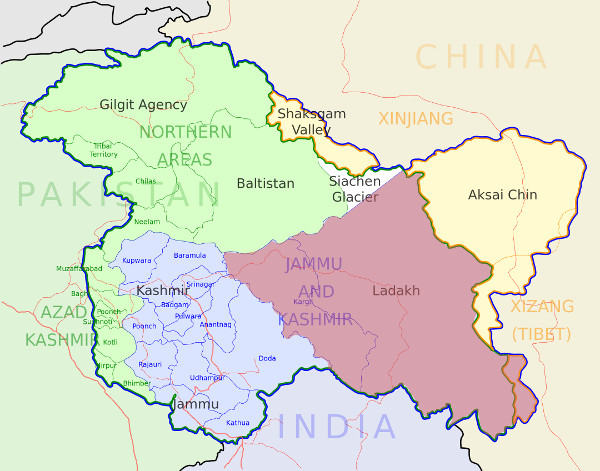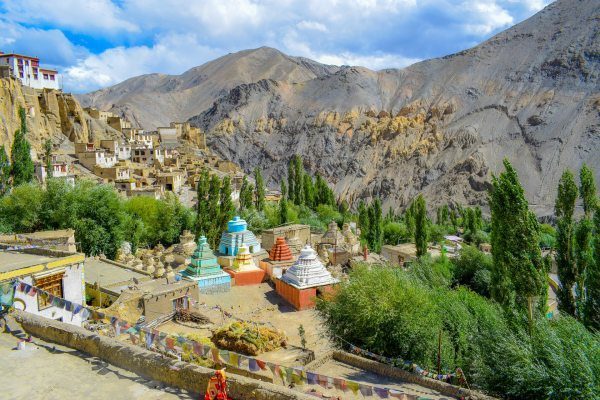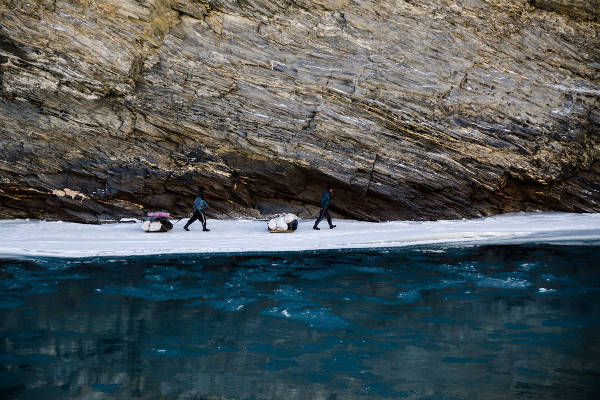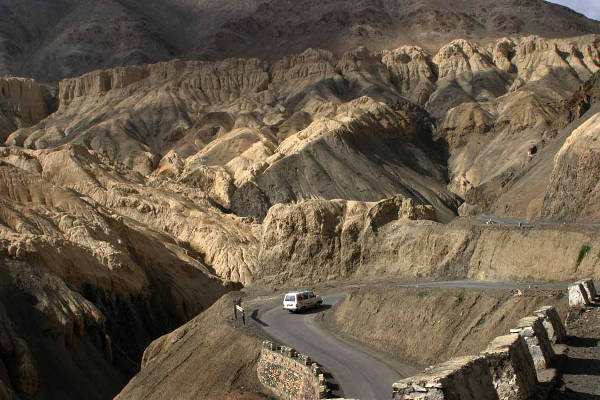Ladakh is a region in Northern India, situated in the state of Jammu and Kashmir.
The region is sandwiched between two of the most famous mountain ranges in Asia – the Karakoram Range to the North and the Himalayas to the South.

Ladakh Trekking
Because of its amazing mountain scenery, Ladakh is also known as the “land of high passes”. Today, tourists from within India and across the globe travel to Ladakh because of the amazing trekking routes that crisscross the region.
On this page, we have provided answers to frequently asked questions about Trekking in Ladakh. You will also find links to detailed route guides for popular trails.
For treks in Sikkim, check out our guide to Trekking in Sikkim, or return to our overview guide to Trekking in India.

Ladakh Trekking FAQ
How do I get to Ladakh?
Leh is the largest town in the Ladakh region and the point at which most tourists to the region start and end their journey. Leh is just over 1,000 km from Delhi and is well connected by drivable roads from Srinagar (434 km), Kargil, (230 km), Manali (494 km), Keylong (380 km), Deskit – Nubra Valley (118 km) and Jammu (690 km).
There are state buses that run to fixed timetable that one can take from all of these destinations to Leh. However, taking a state bus can be a real ordeal so if you do decide to travel by road, we would recommend hiring a private taxi.
If you plan to travel from Delhi or Jammu to Leh, we would highly recommend taking a local plane, which are relatively inexpensive and a lot more convenient than road travel.
Rail travel is also an option. The nearest railway station connected to Leh is Udhampur.

What are the best Treks in Ladakh?
There are literally 100s of trekking routes in Ladakh; however the most popular trails either take one from the Markha Valley or follow the Zanskar River.
The shortest and easiest treks include the Sham Trek (approx. 7 days) and Spituk treks (approx. 6 days).
The tougher and longer treks (over 12 days) generally head up into the Zanskar area or visit the famous Stok Kangri peak (6,153m). In fact in recent years, climbing Stok Kangri has become increasingly popular as it is a non-technical trekking peak like Island Peak or Mera Peak in Nepal.
The two treks in Ladakh that we highly recommend to anyone visiting the region for the first time are the Markha Valley Trek or the Chadar Trek.

When is the best time to Trek in Ladakh?
In terms of trekking, the best time to visit Ladakh is from June through to October. These are summer months where the weather is dry and pleasant. The Himalayas to the south of the region create a rainshadow in Ladakh, which means that the monsoon rains of June through August in Nepal generally don’t reach Ladakh. Temperatures during the summer months range from 35 degrees for highs and low single digits for lows.
The winter months from November through to March are characterised by lots of snow on the higher passes of the region. This makes trekking at this time of year impractical, with the exception of the Chadar trek in Zanskar that is famous for its frozen lake in winter.

What gear do I need for Trekking in Ladakh?
There are some essential trekking gear items we strongly advise to bring with you for trekking in Ladakh.
For more information, see our hiking packing list.
Continue browsing
See more information on India. Or check out these other Indian Hiking articles:

